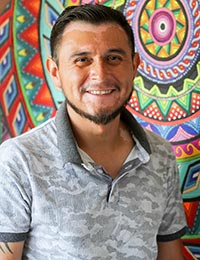
Edgar Trejo
"The art of painting on amate paper is something that runs through my veins. It is part of my Otomí culture, of which I am very proud."
Fauna Sun Mandala, Amate Paper Wall Art with Colorful Otomi Embroidered Horse
Artfully crafted by global artisans.